
MotionControlofBiomimeticSwimmingRobots(高机动
正版现货,套书只发一本,多版面书籍只对书名
¥ 213 九五品
仅1件
河北廊坊
认证卖家担保交易快速发货售后保障
作者喻俊志 谭民 著
出版社华中科技大学出版社
出版时间2019-11
版次1
装帧精装
上书时间2024-09-21
- 在售商品 暂无
- 平均发货时间 12小时
- 好评率 暂无
- 最新上架
商品详情
- 品相描述:九五品
图书标准信息
- 作者 喻俊志 谭民 著
- 出版社 华中科技大学出版社
- 出版时间 2019-11
- 版次 1
- ISBN 9787568053365
- 定价 198.00元
- 装帧 精装
- 开本 16
- 纸张 胶版纸
- 页数 200页
- 【内容简介】
- 本书列选中国政府“中国图书对外推广计划”,内容全面、系统、新颖、实用,不仅适用于普通高等院校信息科学、自动化、机电工程及相关专业的研究生、本科生及专科生的机器人学习课程,也可作为广大致力于机器人研究的科研人员和技术工作者了解水下仿生机器人基础知识及关键技术的参考资料和辅助读物。
- 【作者简介】
- Junzhi Yu received the B.E. degree in safety engineering and the M.E. degree in precision instruments and mechanology from the North University of China, Taiyuan, China, in 1998 and 2001, respectively, and the Ph.D. degree in control theory and control engineering from the Institute of Automation, Chinese Academy of Sciences, Beijing, China, in 2003. From 2004 to 2006, he was a Post-Doctoral Research Fellow with the Center for Systems and Control, Peking University, Beijing. He was an Associate Professor with the Institute of Automation, Chinese Academy of Sciences, in 2006, where he was a Full Professor in 2012. In 2018, he joined the College of Engineering, Peking University, as a Tenured Full Professor. His current research interests include intelligent robots, motion control, and intelligent mechatronic systems. Min Tan received the B.Sc. degree from Tsinghua University, Beijing, China, in 1986, and the Ph.D. degree from the Institute of Automation, Chinese Academy of Sciences (IACAS), Beijing, China, in 1990, both in control science and engineering. He is currently a Professor with the State Key Laboratory of Management and Control for Complex Systems, IACAS. He has published more than 200 papers in journals, books, and conference proceedings. His research interests include robotics and intelligent control systems.
- 【目录】
-
1 Introduction ........................................... 1
1.1 Introduction ........................................ 1
1.2 Hydrodynamic Modeling and Testing ..................... 3
1.2.1 Hydrodynamic Modeling ......................... 4
1.2.2 Hydrodynamic Experimental Techniques.............. 5
1.3 Kinematic Modeling and Control ......................... 8
1.3.1 Kinematic Measurement of Fish Swimming ........... 8
1.3.2 Motion Control ................................ 9
1.4 Learning Control and Motion Optimization ................. 11
1.4.1 Learning Fishlike Swimming ...................... 11
1.4.2 Motion Optimization ............................ 13
1.5 Coordination ....................................... 14
1.5.1 AFSA ....................................... 15
1.5.2 Coordinated Control of Multiple Robotic Fish .......... 16
1.6 Concluding Remarks.................................. 18
References ............................................. 19
2 Bioinspired Fish Body Wave Model Considering Linear Density ... 25
2.1 Introduction ........................................ 25
2.2 Problem Formulation ................................. 27
2.2.1 An Overview of Fish Body Wave ................... 27
2.2.2 Necessary Conditions of Steady Swimming ............ 28
2.3 Design of Body Wave Considering Linear Density ............ 29
2.4 Design of Fish Morphology: Two Cases Studies ............. 32
2.4.1 Design of Main Body ........................... 32
2.4.2 Formation of Caudal Fin and Its Counterpart........... 35
2.4.3 Formation of Pectoral Fin and Its Counterpart .......... 36
2.4.4 Formation of Pelvic Fin and Its Counterpart ........... 36
v
2.5 Simulation and Result Analysis .......................... 37
2.6 Discussion ......................................... 42
2.7 Concluding Remarks.................................. 43
References ............................................. 43
3 Implementing Flexible and Fast Turning Maneuvers
of Multijoint Robotic Fish ................................. 47
3.1 Introduction ........................................ 47
3.2 Analysis and Control of C-Start.......................... 49
3.2.1 Design of Stage 1 .............................. 50
3.2.2 Design of Stage 2 .............................. 53
3.2.3 Design of Stage 3 .............................. 55
3.2.4 Closed-Loop Control of the Turning Angle ............ 56
3.3 Experiments and Results ............................... 58
3.3.1 Experimental Setup ............................. 58
3.3.2 Experiments on the Blunt Fish ..................... 60
3.3.3 Experiments on the Slim Fish ...................... 63
3.4 Discussion ......................................... 66
3.5 Concluding Remarks.................................. 67
References ............................................. 68
4 CPG-Based Swimming Control ............................. 71
4.1 Introduction ........................................ 71
4.2 Overview of Robotic Fish Prototype ...................... 73
4.2.1 Mechatronic Design ............................. 73
4.2.2 Swimming Gaits Design.......................... 75
4.2.3 Hardware and Software Design of the Controller ........ 75
4.3 Design of a Two-Phase Control System .................... 77
4.3.1 A Two-Phase CPG Control Architecture .............. 77
4.3.2 CPG Model ................................... 78
4.3.3 Lower Reflex Model ............................ 79
4.3.4 Medium Sensory Feedback Model .................. 81
4.3.5 High Hierarchical Feedback Control Model ............ 83
4.4 FSM-Based Gait Transition ............................. 85
4.5 Swimming Performance Optimization ..................... 87
4.5.1 Swimming Performance Indicators .................. 87
4.5.2 Performance Under Consistent Phase Differences........ 88
4.5.3 Performance Under Inconsistent Phase Differences ...... 90
4.6 Test Results Analysis ................................. 91
4.7 Discussion ......................................... 94
4.8 Conclusion and Remark ............................... 97
References ............................................. 98
vi Contents
5 3D Maneuvering Control of a Robotic Fish ................... 101
5.1 Introduction ........................................ 101
5.2 Mechatronic Design of the Updated Robotic Fish ............. 102
5.2.1 Head Design .................................. 103
5.2.2 Pectoral Fins .................................. 104
5.2.3 Multilink Propulsive Mechanism ................... 105
5.3 Analysis and Control of 3D Maneuvers .................... 106
5.3.1 CPG Network ................................. 106
5.3.2 Rotational Maneuvers ........................... 108
5.3.3 Translational Maneuvers ......................... 112
5.3.4 Head Motion Control ............................ 113
5.4 Experiments and Discussion ............................ 114
5.4.1 Testing of Rotational Maneuvers ................... 114
5.4.2 Testing of Backward Swimming .................... 116
5.5 Discussion ......................................... 117
5.6 Concluding Remarks.................................. 119
References ............................................. 120
6 Control of Yaw and Pitch Maneuvers of a Multilink Dolphin
Robot ................................................ 123
6.1 Introduction ........................................ 123
6.2 Overview of the Dolphin Robot ......................... 125
6.3 Analysis and Control of Yaw Turn ....................... 127
6.3.1 Analysis of Yaw Turn ........................... 127
6.3.2 A Two-Segment Model for Yaw Turns ............... 127
6.4 Analysis and Control of Pitch Turn ....................... 128
6.4.1 Analysis of Pitch Turn ........................... 128
6.4.2 Design of the Unbending Phase .................... 129
6.4.3 Maintaining the Pitch Angle ....................... 132
6.5 Results and Discussions ............................... 134
6.5.1 Experimental Setup ............................. 134
6.5.2 Testing of Yaw Turns ........................... 135
6.5.3 Testing of Wide-Range Pitch Turns ................. 136
6.6 Discussion ......................................... 145
6.7 Concluding Remarks.................................. 147
References ............................................. 147
7 Leaping Control of Self-propelled Robotic Dolphin ............. 149
7.1 Introduction ........................................ 149
7.2 Theoretical Analysis of Dolphin Leaping Motion ............. 151
7.3 Motion Control of Leaping Robotic Dolphin ................ 154
7.3.1 Prototype of Leaping Robotic Dolphin ............... 155
7.3.2 AoA-Based Speed Control ........................ 158
7.3.3 Pitch Control .................................. 162
Contents vii
7.3.4 Roll Control .................................. 164
7.3.5 Yaw Control .................................. 164
7.3.6 Depth Control ................................. 165
7.4 Experiments and Results ............................... 165
7.4.1 Speed Tests ................................... 165
7.4.2 Leap Tests ................................... 167
7.5 Discussion ......................................... 169
7.6 Concluding Remarks.................................. 170
References ............................................. 171
8 Motion Control of Self-propelled Robotic Jellyfish .............. 173
8.1 Introduction ........................................ 173
8.2 Prototype of the Self-propelled Robotic Jellyfish ............. 174
8.2.1 Mechanical Design ............................. 174
8.2.2 Analysis for Barycenter Adjustment Mechanism
of the Robotic Jellyfish .......................... 178
8.2.3 Dynamic Analysis .............................. 181
8.3 Reinforcement Learning Based Attitude Control .............. 184
8.3.1 A Brief Introduction of Reinforcement Learning ........ 185
8.3.2 Attitude Control of the Robotic Jellyfish .............. 186
8.4 Experiments and Results ............................... 191
8.5 Discussion ......................................... 194
8.6 Concluding Remarks.................................. 195
References ............................................. 196
9 Summary and Outlook ................................... 197
9.1 Technical Contributions ............................... 197
9.2 Future Studies ...................................... 200
Index ...................................................... 203
点击展开
点击收起
— 没有更多了 —

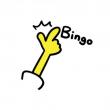
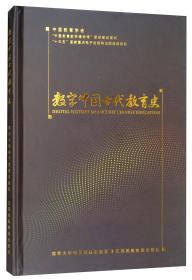

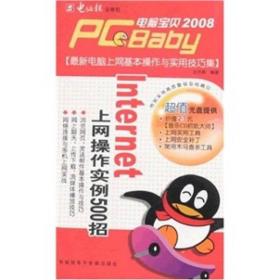



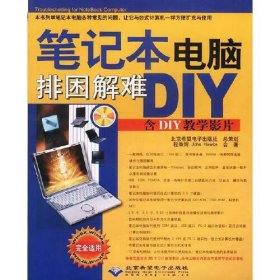
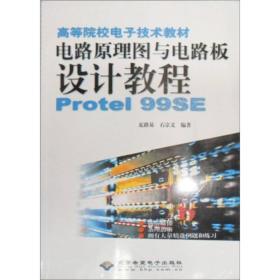
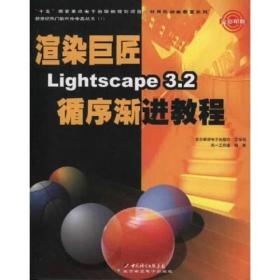

以下为对购买帮助不大的评价